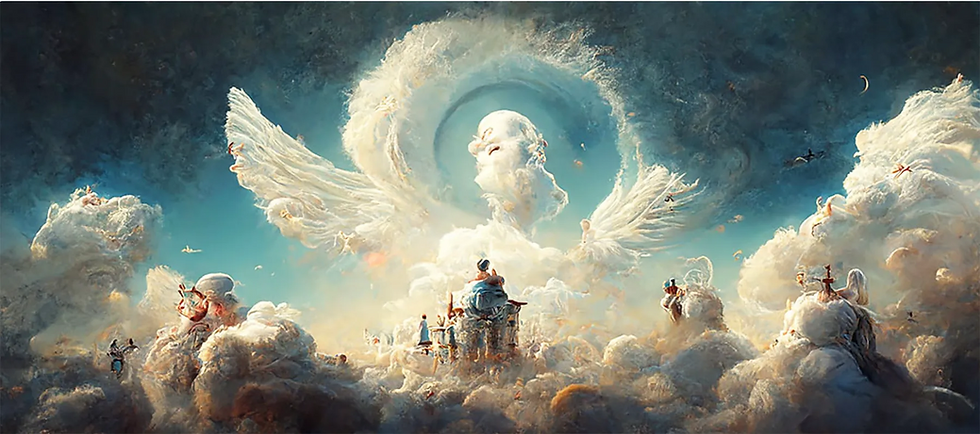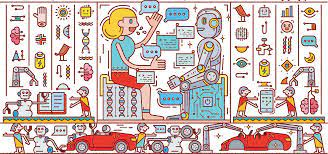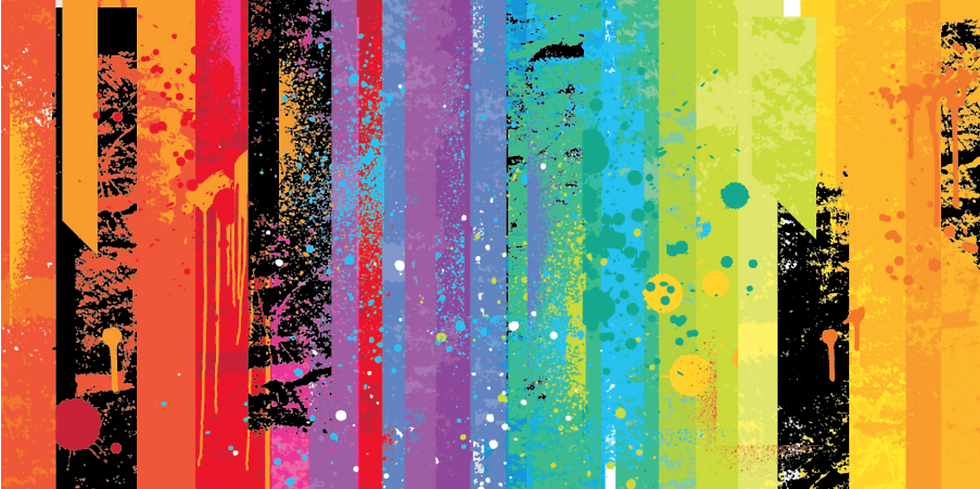Introduction
In the realm of art, the emergence of artificial intelligence (AI) has sparked a captivating fusion of creativity and technology. With its ability to learn, analyze, and generate unique content, AI is transforming the creative landscape, pushing boundaries, and challenging traditional notions of human creativity. In this blog, we will explore the fascinating world where AI and art converge, highlighting the profound impact AI is making across various artistic domains.
The Rise of AI in Art

AI has become an active participant in the creative process, transcending automation. From visual arts to music, literature to design, AI algorithms generate captivating and original content.
In visual arts, AI algorithms learn from extensive datasets to create new artworks that emulate the styles of renowned artists or blend multiple styles into something entirely unique. This expands the possibilities for artistic exploration and provides inspiration to artists.
In music and sound, AI analyzes vast collections of music, enabling it to compose original pieces that evoke specific moods or genres. Musicians also use AI as a creative collaborator, assisting in melody generation and harmonies. AI's involvement in music expands sonic boundaries and offers new avenues for artistic expression.
In literature, AI algorithms analyze texts to generate coherent and engaging written content. Although AI-generated literature challenges traditional notions of authorship, it presents a unique form of storytelling that sparks conversations and provokes thought.
In design, AI-powered tools automate repetitive tasks, generate design variations, and optimize layouts. This accelerates the creative process and allows designers to focus on strategic and innovative aspects of their work.
While the rise of AI in art presents exciting opportunities, challenges and ethical considerations remain. Questions of authorship, bias in AI-generated content, and the preservation of human creativity require careful examination. Striking a balance between human intuition and AI's generative capabilities is crucial to maintain the authenticity and integrity of artistic expression. Some AI image generators that are worth noting are Dalle, Midjourney, and PhChroma.
In conclusion, AI's active role in art transforms it from mere automation to a creative collaborator. Its ability to generate captivating content across various artistic domains expands possibilities, challenges traditional boundaries, and sparks new conversations. The collaboration between human creativity and AI opens up a future where art evolves through the synergy of human imagination and technological innovation.
AI as a Collaborative Tool

Contrary to popular belief, AI is not replacing human artists; instead, it is becoming a powerful collaborator and tool in their hands. Artists are using AI to generate ideas, explore possibilities, and enhance their artistic vision. This collaboration opens up new avenues of exploration and pushes the boundaries of their craft.
AI serves as a catalyst for creativity by offering fresh perspectives and unconventional concepts. It generates variations and alternatives, allowing artists to experiment with different styles and compositions. AI also augments artists' technical capabilities, automating time-consuming tasks and providing recommendations for color palettes, composition, and lighting.
Furthermore, AI helps artists overcome creative blocks by analyzing their existing work and providing prompts and suggestions aligned with their artistic style. However, artists maintain their autonomy and subjective decision-making throughout the process, curating and adding their unique touch to the AI-generated content.
In conclusion, AI as a collaborative tool empowers artists to explore new realms of creativity, expand boundaries, and create unique and innovative works of art. By leveraging AI's capabilities, artists can amplify their artistic expression and push the limits of imagination. The collaboration between human creativity and AI presents an exciting future for the art world.
AI in Visual Arts

AI algorithms have become powerful tools in the world of visual arts, allowing artists to create stunning paintings, sculptures, and digital artworks. By analyzing extensive datasets of existing art, AI systems can learn different artistic styles and generate original pieces that mimic renowned artists or combine multiple styles to create something new. Artists can experiment with compositions, color palettes, and visual effects, expanding their creative possibilities with the help of intelligent algorithms.
Furthermore, AI assists artists in overcoming technical challenges. Automation of tasks like image recognition and realistic rendering frees artists to focus more on their creative vision. AI-powered tools offer recommendations on composition, lighting, and improvements, enhancing precision and efficiency in the artistic process. This collaboration between human creativity and AI's technical capabilities elevates artistic expression and allows artists to create works with greater depth.
AI's role in visual arts extends beyond generating artwork. It can analyze and interpret visual data, classify images and identify patterns or emotions. This analysis provides artists with valuable insights into the impact of their work and how it resonates with viewers. AI acts as a feedback mechanism, guiding creative decisions and enabling artists to create art that engages and connects with their audience.
However, it is essential to recognize that AI-generated artworks lack the subjective experiences and emotions brought by human artists. The interpretation, intention, and personal touch of the artist remain integral to the artistic process. AI serves as a powerful tool and collaborator, amplifying artistic vision, but it is the human artist's perspective and creativity that imbues the artwork with depth and meaning.
In conclusion, AI's presence in visual arts has revolutionized the creative process. Artists can now leverage AI algorithms to generate original artworks, explore new styles, and overcome technical challenges. The collaboration between human artists and AI enhances artistic expression, expands creative possibilities, and provides valuable insights. As AI continues to evolve, it will undoubtedly play an increasingly vital role in the visual arts, empowering artists to create captivating and meaningful works of art.
AI in Music and Sound

AI's impact extends to the realm of music, revolutionizing composition, production, and performance. AI algorithms analyze vast musical databases, learning patterns and structures, and generate original compositions that evoke various genres, moods, or styles. Musicians embrace AI-powered tools as creative collaborators, providing suggestions for melodies, harmonies, and chord progressions. AI expands the creative possibilities in music, acting as a wellspring of inspiration.
In addition to composition, AI enhances music production by automating repetitive tasks. It can analyze and process audio recordings, adjusting levels, applying effects, and optimizing sound quality. This automation allows musicians and producers to focus on the artistic aspects of their work, ensuring their creative vision is fully realized.
AI's impact also extends to music performance. AI algorithms can generate dynamic accompaniments in real time, responding to the input of live musicians. This collaboration between human performers and AI systems creates a unique and interactive musical experience, where the AI adapts and complements the musician's performance, adding layers of creativity to live music.
However, while AI in music offers exciting opportunities, it also raises questions and challenges. Some argue that AI-generated music lacks the emotional depth and personal expression of human musicians. Nonetheless, AI serves as a tool and a source of inspiration, not a replacement for human creativity. The human touch and interpretation remain integral in creating music that resonates with audiences on an emotional level. Some music generators that are worth noting are Beatoven, Soundraw, and riffusion.
In conclusion, AI's presence in music and sound is transformative. From composition to production and performance, AI algorithms provide new avenues for creativity and exploration. While challenges and debates exist, the collaboration between human musicians and AI systems unlocks fresh horizons, pushing the boundaries of musical expression and offering novel experiences to both creators and listeners.
Conclusion
Artificial intelligence is reshaping the creative landscape, enabling artists to explore new frontiers and pushing the boundaries of human imagination. From visual arts to music, literature to design, the fusion of AI and art opens up a world of possibilities that we are only beginning to discover. As AI continues to evolve, its role as a creative collaborator will undoubtedly deepen, forever changing the way we perceive and engage with art. Embracing this synergy between AI and human creativity promises to be an exhilarating journey into uncharted
Comments